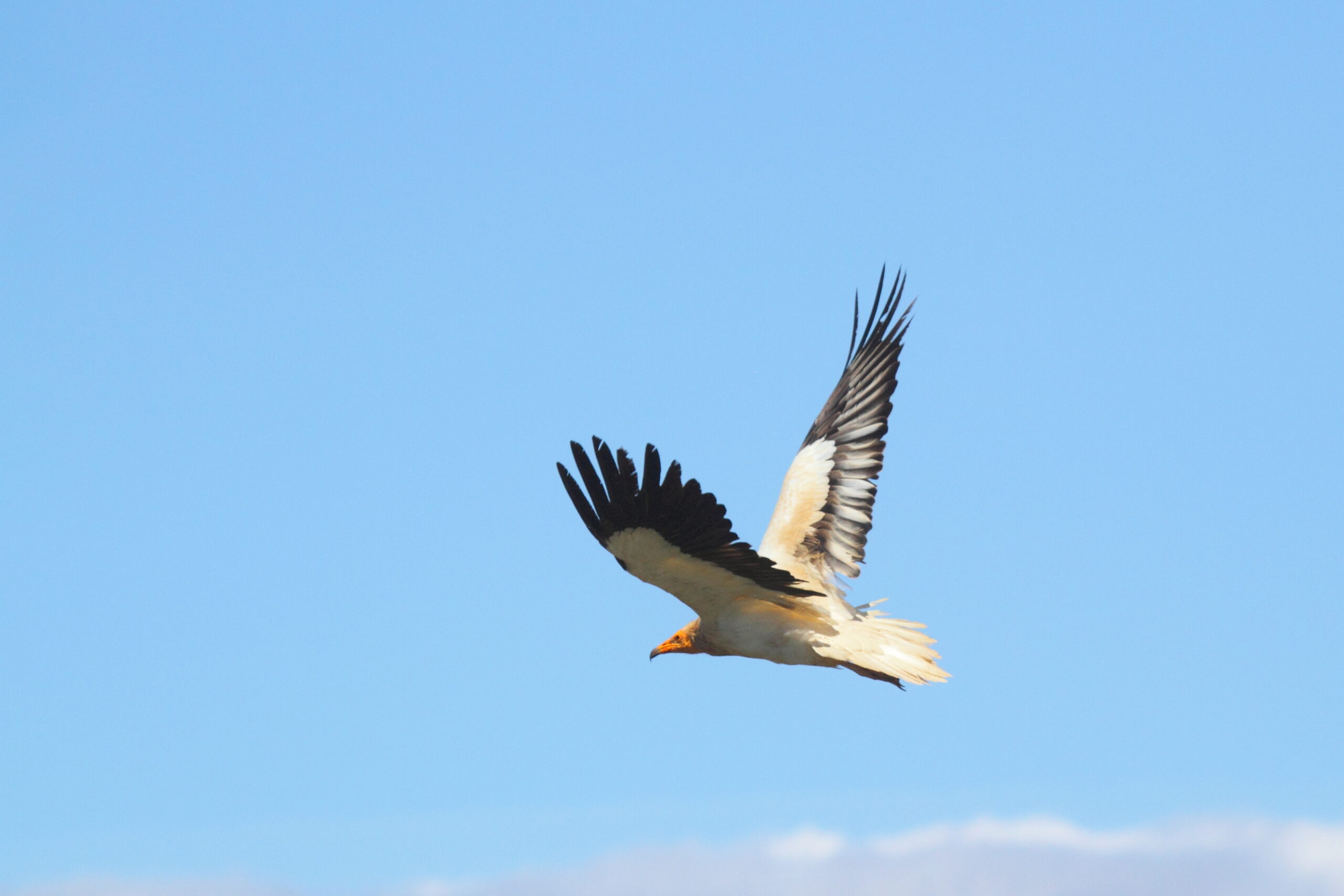In their sub-Saharan wintering grounds the population of Egyptian Vultures that breed in Bulgaria and across the Balkan Peninsula are tentatively beginning to start their northward migration. As Europe’s smallest vulture returns to Europe for another breeding season our colleagues at the Egyptian Vulture New LIFE project in Bulgaria look back on what was a very productive season in 2018.
Egyptian Vultures in Bulgaria
Despite suffering a 50 percent decline in the last 14 years the population of Egyptian Vultures in Bulgaria is a stronghold for a species that has declined by a dramatic 80 percent across the Balkan Peninsula over the last 30 years. In total it’s estimated that between 60 and 80 pairs of Europe’s smallest vulture across the Balkans. The region’s second most important population is found in FYR Macedonia with between 15-21 pairs, in Albania there are around 9-10 pairs, Greece has just five pairs remaining and the European region of Turkey has around 2-3 pairs.
The 2018 breeding season results
During the annual survey carried by the at Egyptian Vulture New LIFE the breeding population at the two sites in the Eastern Rhodopes and in northern Bulgaria has remained relatively stable with high productivity.
In 2018 the survey found the number of territories occupied by breeding pairs was the same as during the 2017 season, 26 in total (20 in the Eastern Rhodopes and 6 in northern Bulgaria), a number that hasn’t significantly changed in the last six year. Of the breeding pairs 19 pairs (or 73 percent of the population) 15 in the Eastern Rhodopes and four in northern Bulgaria, began incubating clutches. This led to 25 chicks hatching and 21 successfully fledging, 17 in the Eastern Rhodopes and 4 in northern Bulgaria.
This year was an exceptional year for the population, nearly half of the successful pairs raised two chicks (seven pairs in the Eastern Rhodopes and one in northern Bulgaria). The 47 percent of pairs is one of the highest number of pairs raising two chicks over the last 15 years, with such a high percentage only happening a few times before in 2006, 2008 and 2014.
These results suggest the species has reached a plateau and is a stable population in terms of numbers and breeding success.
Attracting non-breeding birds

This year several supplementary feeding stations appear to be successfully attracting non-breeding individual birds known as ‘floaters’ to Bulgaria and Greece from potentially former breeding sites from across the region. Since monitoring at the feeding stations began a total of 16 birds were observed at the Studen Kladenets feeding station developed as part of the LIFE Re-Vultures led by Rewilding Rhodopes and the Kresna and Kotel Vulture Restaurants maintained by the Fund for Wild Flora and Fauna, Green Balkans and the Bulgarian Society for the Protection of Birds as part of Vulture Back to LIFE. In 2018 seven pairs were observed visiting Vulture Restaurants and eight at individual supplementary feeding stations which is 60 percent of the population in Bulgaria.

These feeding stations are vitally important to supporting the populations of Egyptian Vultures, one of the birds observed visiting the Studen Kladenets feeding station was Iliaz (the last surviving juvenile of nine tagged in 2012). During these visits she found a mate and began occupying a breeding territory in Greece. a great story that gives hope for the survival and recovery of the Balkan population.
In 2018 in line with the our long-term program to ensure safe food for the species in Bulgaria we supported at least 7 pairs at the vulture restaurants and another 8 pairs with the individual supplementary feeding scheme (60% of the population of the Egyptian vulture in Bulgaria).
Egyptian Vulture New LIFE

Working collaboratively projects like the Egyptian Vulture New LIFE aims to reinforce the Egyptian vulture population in their Europe’s easternmost range across the Balkans. By actively managing and restocking the population by releasing captive-bred birds the project will support the small Balkan population which number between 60 and 80 pairs across the whole region. The project is working to deliver conservation measures that eliminate major known threats such as illegal poisoning and electrocution in their summer breeding grounds. Monitoring the population closely using GPS transmitters will also help the project tackle the major threats Egyptian vultures face. The Egyptian Vulture New LIFE is a partnership of organisations, led by the Bulgarian Society for the Protection of Birds from 14 countries spanning Europe, the Middle East and Africa, to protect Egyptian vultures not only in Europe but all along their migratory flyway.




